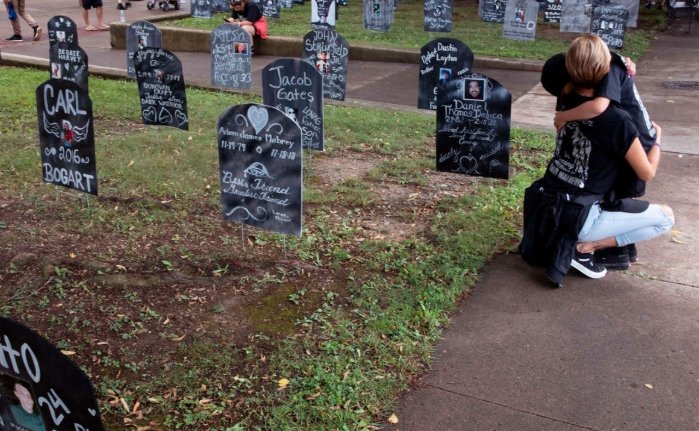A quiet cemetery in Oban, a picturesque town on Scotland’s west coast, has become a stark symbol of a worsening crisis. Among the gravestones, fresh markers bear the names of those lost too soon—victims of a relentless drug epidemic. The numbers are staggering, the losses personal, and the grief immeasurable.
A Growing Cemetery, A Shrinking Generation
James McMillan and Lisa McCuish were childhood neighbors. They played on the same streets, attended the same schools, and now, in death, lie side by side at Pennyfuir Cemetery. Their graves are among at least eight recent burials linked to drug misuse in this town of just 8,000 people. The youngest victim was 26. The oldest, 48.
Scotland has endured the highest drug-related death rate in Europe for years. In 2023 alone, 1,172 lives were lost. Oban’s numbers may seem small in comparison, but in a close-knit town, each loss sends shockwaves. Every funeral represents a devastated family, a community left to wonder if more could have been done.

A Mother’s Worst Fear Confirmed
Jayne Donn, James McMillan’s mother, recalls the moment her world shattered.
“At 10 to five in the morning, when it was snowing and my Christmas tree was up, the police came to my door,” she says. “I knew why they were there.”
James had died of an overdose at just 29 years old, barely 36 hours after being released from custody. His struggles with addiction, mental health, and the justice system had defined much of his adult life. Diagnosed with ADHD, bipolar disorder, and drug-induced psychosis, he had cycled through treatment programs, prison sentences, and brief periods of sobriety. But in the end, he slipped through the cracks.
“As a little boy, he was blonde-haired, blue-eyed, full of mischief,” Jayne remembers. “As a man, he was very lost.”
From Prescription to Street Drugs: Lisa’s Story
Lisa McCuish’s descent into addiction was different but no less tragic.
Her sister Tanya describes her as a “larger-than-life character with a heart of gold.” Lisa wasn’t into drugs, Tanya insists. But when she was prescribed diazepam to manage anxiety, she found herself needing more. Eventually, she turned to the streets to get it.
“She kept saying she needed more help, more support,” Tanya recalls. “But she didn’t get it.”
Lisa started using heroin. On September 13, 2022, she suffered a cardiac arrest and died four days later in a hospital in Paisley. She was 42. Her system contained prescription medications and Etizolam—an illicit benzodiazepine commonly known as street Valium.
A System Struggling to Cope
The cycle is familiar. Families cry for help, but the system is fractured. Jayne and Tanya describe a patchwork of services—charities, local authorities, NHS addiction programs, housing support—none of them fully connected.
“He was released into a city he didn’t know with no jacket, no money, and nobody aware,” Jayne says of her son’s final days. “He lasted less than 36 hours.”
A Scottish Prison Service source points out that decisions on release from remand fall to the courts, not the prison system. But the reality remains: many struggling with addiction exit prison with no real support, making relapse all but inevitable.
The Bigger Picture: Scotland’s Drug Crisis
Scotland’s drug problem is not new, but the situation in smaller communities like Oban is gaining attention. Without the extensive support networks of larger cities, rural drug users often struggle even more to access life-saving services.
A breakdown of official data for small towns isn’t readily available, but in just 18 months, at least eight confirmed or suspected drug-related deaths have been recorded in Oban alone.
The town, recently named Scotland’s “Town of the Year,” attracts thousands of visitors annually with its stunning coastal views and historic sites. But for those who live here, an invisible crisis is playing out.
What Comes Next?
Both Jayne and Tanya believe that Scotland’s government must act decisively.
“I personally believe that a lot of addiction is to do with mental health first,” Tanya says. “There’s no continuity in support from addiction services or mental health services. There’s no link-up.”
For now, they continue visiting Pennyfuir Cemetery, mourning not just their loved ones but an entire generation slipping away.


















